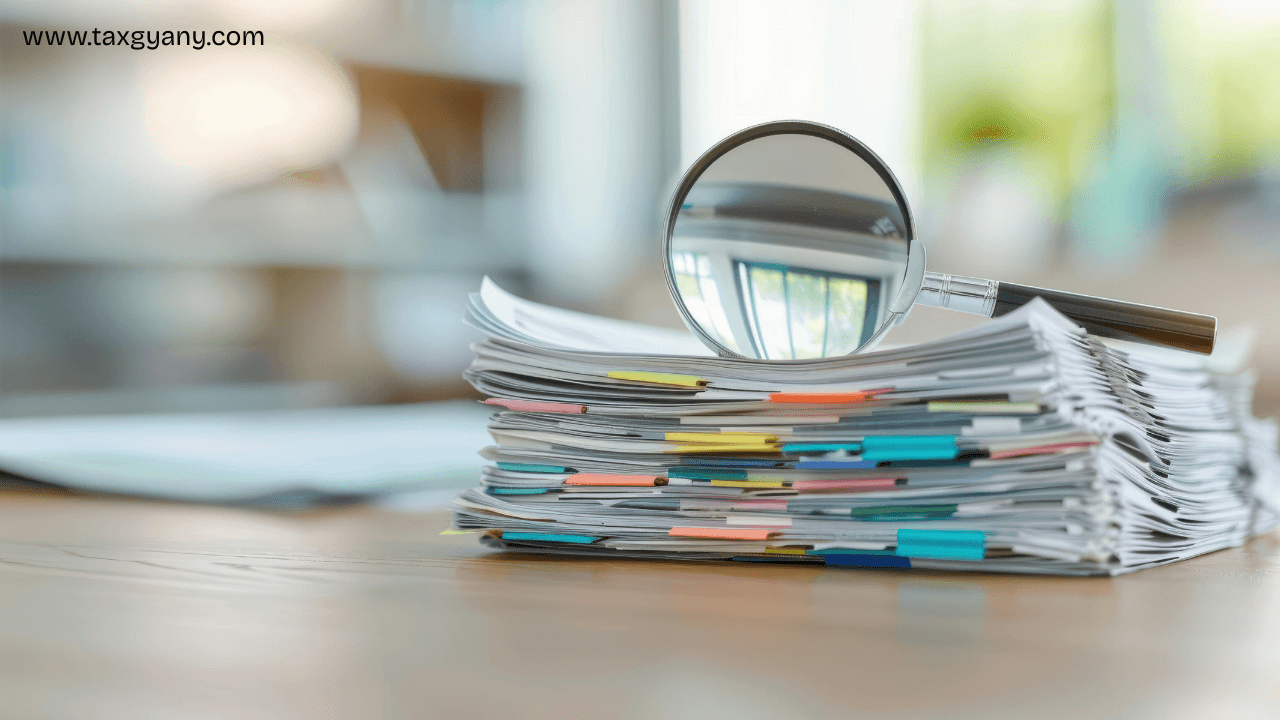Income Tax Scrutiny Notice – What the Department Checks Before Selecting Your ITR (FY 2025-26)
The Income Tax Department has issued new guidelines in June 2025 explaining how it chooses which income tax returns (ITRs) will go for detailed scrutiny for Financial Year 2025-26.
If you’ve been worried about getting a scrutiny notice, this article explains how and why your ITR may be selected.
These guidelines improve transparency by explaining what parameters the department uses.
✅ Why Did CBDT Issue These Guidelines?
The Central Board of Direct Taxes (CBDT) issues these guidelines every year to clarify how “compulsory selection” of returns for scrutiny happens.
For FY 2025-26, the new circular issued on June 13, 2025 lays out the criteria, rules, and procedures in detail.
👉 The aim is to ensure taxpayers know why they were selected and avoid surprises.
✅ What’s New in FY 2025-26 Guidelines?
The latest guidelines are similar to those for FY 2024-25 but with some important updates, especially around survey cases under Section 133A.
⚠️ One key change:
✅ For surveys under Section 133A (excluding 133A(2A)) conducted on or after 01.04.2023, the ITR can now be selected for scrutiny even if no tax evasion evidence was found.
Earlier, selection was limited to cases where the survey led to detection of tax evasion.
This change could worry businesses subjected to routine surveys.
✅ Expert Views on the Change
Advocate Bhimanshu Kansal says this is a big shift. Even if a survey finds no evasion, that alone is enough to select the case.
CA Ashish Karundia counters that this isn’t really new. Earlier scrutiny guidelines also treated survey data as information that can trigger scrutiny.
Karundia clarifies: Information from a survey under Section 133A is valid for scrutiny under Section 143(2) or reassessment under Section 148.
✅ Important Assessment Timelines
📅 As per the guidelines for FY 2025-26:
✅ Notice u/s 143(2) (intimating selection for scrutiny) must be issued by June 30, 2025.
✅ Scrutiny completion by NaFAC must happen by March 31, 2026.
👉 Many notices were already issued by June 30, 2025, as part of this routine process.
✅ Key Areas of Concern in Compulsory Scrutiny
CA Jigar Suba warns that even though the circular looks routine, many taxpayers may not realize their cases meet these criteria.
✅ High-risk flags include:
Past or recent search or survey actions (compulsory scrutiny)
Trusts/Institutions receiving donations under Section 80G whose registrations have been cancelled or not approved by March 31, 2024
Information from SFT (Statement of Financial Transactions), TDS systems, Investigation wing, Enforcement agencies
Recurring additions in past assessments exceeding ₹50 lakh (metro cities) or ₹20 lakh (other cities)
✅ Table of Selection Parameters
Here’s a summary table from the June 13, 2025 CBDT circular:
| Code | Scenario | Parameters |
|---|---|---|
| CS01 | Survey u/s 133A | Assessee with survey (excluding 133A(2A)) on or after 01.04.2023 |
| CS02 | Search & Seizure / Requisition | Initiated u/s 132 or 132A on or after 01.04.2023 but before 01.09.2024 |
| CS03 | Search & Seizure / Requisition | On or after 01.09.2024 but before 01.04.2025 |
| CS05 | Recurring additions | Exceeding ₹50 lakh (8 metro cities) / ₹20 lakh (other cities), final or upheld in appeal |
| CS06 | Specific information of tax evasion | Information from enforcement or investigation agencies for that AY |
✅ Source: CBDT circular dated June 13, 2025
✅ What Happens After Your ITR is Selected for Scrutiny?
🔎 Once selected, your Jurisdictional Assessing Officer (JAO) will issue a notice requesting more details.
✅ You must submit information on the Income Tax Compliance Portal as per deadlines.
✅ Notices are typically issued under Section 143(2) or 142(1) of the Income Tax Act.
✅ Important Notes About Section 142(1) Notices
Section 142(1) notices are for people who were asked to file an ITR but didn’t.
The circular clarifies these cases won’t go for compulsory scrutiny.
Instead, they’ll be handled by Computer-Assisted Scrutiny Selection (CASS).
CBDT says:
“Returns filed in response to Section 142(1) notices due to NMS Cycle/AIS/SFT/TDS/CPC-TDS info will not be taken up for compulsory scrutiny. They will go through CASS.”
✅ Rules About Notices Under Section 148
✅ Jurisdictional Assessing Officers (JAOs) must upload documents for NaFAC in these cases:
Where notices u/s 148 have been issued
Whether or not returns were filed in response
✅ Notices u/s 143(2)/142(1) will be served through NaFAC.
📅 These assessments must complete by March 31, 2026.
✅ Non-Search Cases Under Section 148
CBDT clarifies:
✅ Non-search cases picked u/s 148 don’t need to be sent to Central Charges unless they match Board guidelines.
✅ Central Charges handle high-stakes tax evasion/search/seizure cases.
✅ If information about unrelated people emerges during a search, it usually goes to their jurisdictional AO for 148 assessment.
✅ Why These Guidelines Matter
👉 They ensure transparency.
👉 Taxpayers know why their ITR was picked.
👉 Helps professionals prepare clients for possible scrutiny.
👉 Reduces surprises and disputes.
✅ Conclusion
If you get a scrutiny notice, don’t panic.
✅ Understand which section it was issued under.
✅ Check if your case matches CBDT’s published parameters.
✅ Respond on time with complete details via the portal.
If you need help handling scrutiny notices or notices under 142(1), 143(2), 148, consult your tax professional or Taxgyany.
📌 Need Assistance?
✅ Call us: 730 430 7888
✅ Visit: www.taxgyany.com
#IncomeTax #ScrutinyNotice #CBDT #Section133A #Section143 #Section148 #AY2025_26 #TaxCompliance #IndiaTax #Taxgyany #ITRFiling

